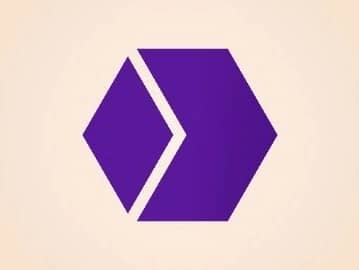Subscribe to wiki
Share wiki
Bookmark
Soulverse
Soulverse
Soulverse is a decentralized identity infrastructure project that aims to provide individuals and enterprises with tools for digital sovereignty. The platform is designed to address challenges of fragmented digital identities by creating an ecosystem for secure and interoperable identity management using blockchain technology. [6]
Overview
Soulverse is developing an ecosystem centered on the principles of Self-Sovereign Identity (SSID), which allows users to control their personal data. The project's primary objective is to build the infrastructure necessary to facilitate the adoption of Decentralized Identities (DIDs). The project established its social media presence in June 2023. [5] By integrating biometric authentication, a digital asset wallet, and interoperable avatars, Soulverse seeks to offer a unified and secure user experience across various digital platforms. The platform emphasizes user control over personal data, privacy, and seamless navigation of digital environments. According to its public roadmap, Soulverse set a goal to acquire 100,000 users and establish significant platform partnerships by the end of 2024. [6]
The project describes its platform as a "secure blockchain universe" focused on innovating how digital identities are managed and utilized. It maintains a presence across several social media and community platforms, including X (formerly Twitter), Telegram, and Discord, to engage with its community. [3] [4]
Products
The Soulverse ecosystem is composed of four main products designed to function as an integrated suite. The foundational component is Soul ID, a blockchain-based digital identity solution that provides users with a Decentralized Identifier (DID). This system is intended to give users control over their personal data and protect against identity theft while ensuring the identity is interoperable across different services. Access to the ecosystem is secured through Soul Scan, a biometric authentication system that uses face authentication for user verification. For managing digital assets, the platform includes the Soul Wallet, described as a "super wallet" that supports the storage and transfer of cryptocurrencies and NFTs. The final component is the Soulogram, a customizable digital avatar that functions as a user's unified digital presence across various platforms, aiming to create a more cohesive digital experience. [6]
Features
The Soulverse infrastructure is built upon several key features to support its digital identity framework. A primary feature is the use of biometric authentication for secure access and user verification. The platform's foundation is its Decentralized Identity system, which enables users to own and manage their data through a Soul ID. An integrated "super wallet" is included for the management of a wide range of digital assets within the ecosystem. The platform also incorporates digital avatars, known as Soulograms, to provide users with a consistent identity across different digital platforms and virtual worlds. A core technical goal of the project is interoperability, which is intended to ensure that user identities and assets can function smoothly across different blockchains and digital environments. [6]
Ecosystem
The Soulverse ecosystem is designed as an integrated suite of products and technologies that provide a comprehensive digital sovereignty solution. The Soul ID serves as the core of the ecosystem, providing a secure, user-controlled identity. This identity is accessed and verified using the Soul Scan biometric technology. The Soul Wallet functions as the financial layer, allowing users to manage their digital assets, including cryptocurrencies and NFTs, in a secure environment. The Soulogram provides the visual representation layer, enabling a consistent user presence across the digital world. The entire ecosystem is powered by its native utility token, the Soul Coin ($SoulX), which is used to facilitate transactions, rewards, and other interactions within the platform. [6]
Use Cases
According to project documentation, the technology developed by Soulverse has potential applications across several industries. These include:
- Finance: For secure identity verification and simplified digital transactions.
- Healthcare: To ensure data privacy and manage patient identities securely.
- Education: For verifying academic credentials and managing student records.
- Entertainment: To provide unified digital identities for gaming and virtual worlds.
These use cases leverage the platform's focus on secure, user-controlled identity and data management. [6]
Architecture
Soulverse's technical architecture is based on the principles of Self-Sovereign Identity (SSID) and utilizes blockchain technology as its foundational layer. This framework is designed to allow individuals to create and manage their own Decentralized Identifiers (DIDs) without relying on a central authority or third-party intermediary. The system is being developed with a focus on interoperability, suggesting a flexible architecture capable of interacting with various platforms and blockchains. User data and identity verification are secured through biometric systems like Soul Scan, which adds a layer of hardware-level security to the blockchain-based identity infrastructure. [6]
Tokenomics
The native utility token of the Soulverse ecosystem is the Soul Coin, which uses the ticker symbol $SoulX. The total supply of the token is capped at 1 billion. [6]
Allocation
The total supply of $SoulX is distributed across several categories to support the growth and maintenance of the platform. The designated allocation categories are:
- Ecosystem Development
- Team
- Community Rewards
- Liquidity
- Partnerships
Specific percentages for each category have not been detailed in the available documentation. [6]
Utilities
The $SoulX token is designed with several functions to facilitate activity within the Soulverse ecosystem. Its primary utilities include:
- Facilitating transactions and interactions on the platform.
- Rewarding users and community members for engagement and participation.
- Staking to earn returns.
- Incentivizing significant contributions to the ecosystem's development.
These utilities are intended to create a functional economic model within the Soulverse platform. [6]
Governance
The provided project materials do not specify a formal on-chain governance mechanism where token holders vote on protocol changes. Instead, the project states that it uses community feedback channels such as forums, social media, and regular Ask Me Anything (AMA) sessions to gather input from its community. This feedback is intended to help shape the project's future direction and development. [6]
See something wrong?
